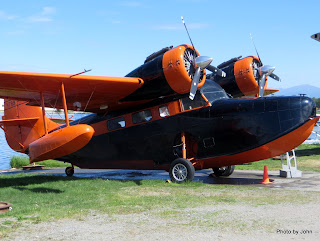When we left Arizona, it was with a canoe on the
rack, specifically so that the grandson and I could do an overnight canoe trip.
Thursday and Friday were supposed to be the days. We took the trailer to the South Rolly Lake
campground in the Nancy Lakes State Recreation Area where BJ and Turk would
stay while we did the Lynx Lake circuit. The fact that the grandson had on a
mosquito head net before we left the trailer was an indication of things to
come.
We launched and headed out to do the circuit in a
clockwise direction. About 8 miles total, 14 lakes and 14 portages with four
designated campsites scattered around the circuit. Mosquitoes were a cloud at
the launch but we persevered.
We checked out a beaver lodge
and arrived at the next portage where the welcoming
committee met us with rev’d up wings.
A pair of loons sang to us on one lake.
At the third portage, after talking with a party headed the opposite
direction who reported even worse mosquitoes at the campsites, we decided to change plans and set up camp in a different location
than original anticipated,
We did get in a tent night, and more paddling and time together so it wasn't a total write-off.
























































